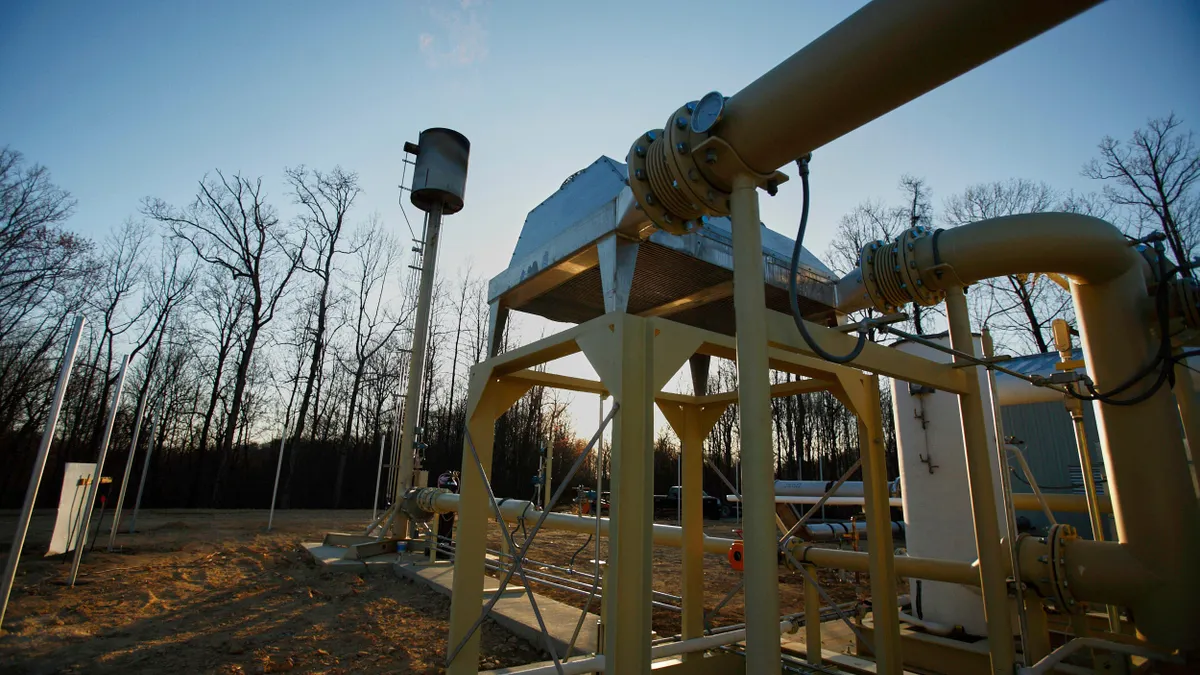Aluminum prices recently took a sharp upward turn, along with surging demand for primary and recycled grades.
Contributing factors include China's reduced aluminum production, along with brand commitments and government policy pushes to use more sustainable packaging or manufacturing materials. Demand is spiking for scrap aluminum in general, but especially for used beverage cans (UBCs).
“There’s more demand than we can keep up with in terms of folks wanting aluminum cans,” said Matt Meenan, senior director of external affairs at the Aluminum Association.
UBC prices have nearly doubled since this time last year, reaching more than 81 cents per pound this month compared with 45 cents in October 2020. UBC prices increased 5% in the past month alone.
“It wasn't until recently that we've seen a significant increase in the price of aluminum,” said Michael Benedetto, president and owner at TFC Recycling in Virginia. “Aluminum seemed to be the laggard behind paper and some other commodity prices going up, and we were baffled by that… It's been refreshing to see all commodity prices improved from where they were in 2019 and part of 2020.”
But complicating factors like transportation and supply chain difficulties are creating a bittersweet moment for many aluminum recyclers that can't easily get their product to market.
“They talk about this being the best of times and the worst of times,” said Joe Pickard, chief economist at the Institute of Scrap Recycling Industries (ISRI). “They love seeing volumes up, they love seeing prices up. But when they can't get the products to their consumers — because they can't secure trucks or containers or other modes of transportation — they can’t deliver the goods.”
Demand drivers
Aluminum demand generally lagged in 2020, in part due to pandemic restrictions prompting manufacturing facility closures, but strongly recovered this year. It was up about 15% during the first seven months of 2021, compared with that period in 2020, Meenan said.
The construction and automotive sectors are especially driving demand, despite computer chip shortages that have stalled some vehicle production lines. The desire to lightweight autos and other industry advancements are also factors.
“You're looking at additional electric vehicle production, and that tends to be good for aluminum consumption. They're generally using more aluminum in their auto production,” Pickard said.
UBC demand ticked back up in 2020 partly because more people purchased canned beverages for consumption at home during the early pandemic lockdowns. Under those restrictions, UBC collection dropped off steeply and created a choke point for supply. The sector is maintaining strong demand in 2021 and is buoyed by the popularity of hard seltzer, more craft beers switching from glass and growing amounts of other beverages now being sold in aluminium cans.
“We had a period in the early 2010s where can sheet demand was on the decline, and I think that's really reversed in the last several years,” Meenan said, adding brand and government commitments to increase sustainability also contribute to booming demand. "There’s obviously been a push against single-use plastics."
In Virginia, for example, where TFC Recycling is located, Gov. Ralph Northam signed an executive order this year banning certain single-use plastics at state agencies, colleges and universities. Such actions encourage more brands to seek aluminum packaging, Benedetto said. Plus, a recent report by consulting firm Sphera indicates North America's aluminum can production is becoming more sustainable, with more efficient manufacturing practices resulting in a 40% drop in greenhouse gas emissions since 1991.
“I think that it'll have a trickle-down effect to us and a trickle-down effect to our customers and contracts with the communities we serve,” he said. “I'd love to see more packaging in aluminum. I think it's environmentally friendly and sustainable and has a great return on investment from a recycling perspective.”
When demand was down in 2018 and 2019, recycled aluminum consumers focused more on quality “to the point where it was really difficult to send a load to a beverage manufacturer and not have it downgraded,” Benedetto said.
He added that can makers don’t want all grades of recycled aluminum, just UBCs, but MRFs generally use eddy-current separators for metals and don’t have the granular sortation capability to distinguish aluminum beverage cans from other containers.
"The aluminum beverage manufacturers do not want pressurized containers,” Benedetto said, adding loads have been rejected for that reason. “There are opportunities for mills, when there is an oversupply of material and a lack of demand, to get very picky on quality and downgrade or reject [material].”
But surging aluminum demand and short supply reportedly has prompted some customers to loosen or rethink their quality requirements.
Supply snags
Overall scrap aluminum exports are up about 14% this year. A subset of that, UBC exports, have been up, especially to Malaysia and India, Pickard said.
Yet UBC imports from Mexico and Canada also are up to meet the domestic supply shortfall, creating a curious dynamic. “It is a little weird that we're simultaneously exporting and importing a fair amount of UBCs,” he said. Concurrent challenges are preventing aluminum suppliers from meeting the expanded demand.
“There's a shortage of metal — not just in the U.S. but globally, too — in part because China has been cutting back on their aluminum production, and U.S. primary aluminum production was actually pretty soft,” Pickard said. “So there's an increasing reliance on scrap as the raw material input for aluminum production.”
China's aluminum production has fallen month-over-month since the spring, resulting in a 2 million metric ton deficit so far this year. It relies heavily on coal for energy and is experiencing a shortage of that material, along with high prices. In addition, the Chinese government recently stepped up regulations to curb pollution and restricted fossil fuel use in the most energy-intensive industries including aluminum production, which accounts for about 4% of the country’s carbon emissions. Last week, the government indicated it would intervene to stabilize coal prices and ease the energy crisis in light of reduced economic activity and fears of power and heat shortages as winter approaches.
China’s energy restrictions also caused production cuts on materials commonly used for making aluminum. Magnesium and silicon shortages are causing price hikes, and a military coup in Guinea raised concerns about hindering the bauxite supply. Guinea is one of the biggest global bauxite producers, and China gets nearly half its supply from the country. Bauxite is used to make alumina, a key component of primary aluminum.
Supply chain difficulties are present across all industries as ports remain clogged with months' worth of backlogged export and import containers waiting to be unloaded. Container prices therefore have skyrocketed to up to 10 times their previous cost. The situation makes it difficult for recyclers to move aluminum scrap in international markets.
North American freight issues, such as trying to ship scrap via truck, are challenging too. Benedetto said that “all of the plastic and aluminum and steel that we collect stays domestic, and we have seen issues with trucking.” Manufacturers' scramble to get any available supply is yet another factor spurring higher transportation costs.
What lies ahead
China’s reduced production likely will be a longer-term trend affecting aluminum markets, ISRI's Pickard said. Even with the recently suggested coal interventions, the Chinese government has increased its environmental actions for years and the momentum likely will continue.
Eventually, relief is expected for the containers stuck at ports. But other supply chain problems could remain for some time in transportation sectors like trucking that suffered labor shortages for years even prior to the pandemic.
Analysts expect the market fundamentals to keep aluminum prices elevated, at least for the near term. The ongoing challenges with primary aluminum supply, as well as broader packaging sustainability trends, could also prove to be a longer-term boon for secondary aluminum.
Another bright spot is that additional domestic aluminum can-making capacity is coming online, the Aluminum Association's Meenan said. Several new facilities are under construction, including projects by Crown Holdings in Virginia, Ball Corporation in Nevada and Canpack in Indiana.
“I think new capacity that's going to be coming online is probably going to be geared increasingly toward scrap as the main raw material input and away from primary production," Pickard said, "because it's so energy intensive to produce primary aluminum."
With so many topsy-turvy economic factors, the current situation may be positive for recyclers, but it's difficult to predict if and how long aluminum will ride the current highs.
"We're coming out of a period of disruption and maybe going into another period of disruption as we exit COVID," Meenan said.



















